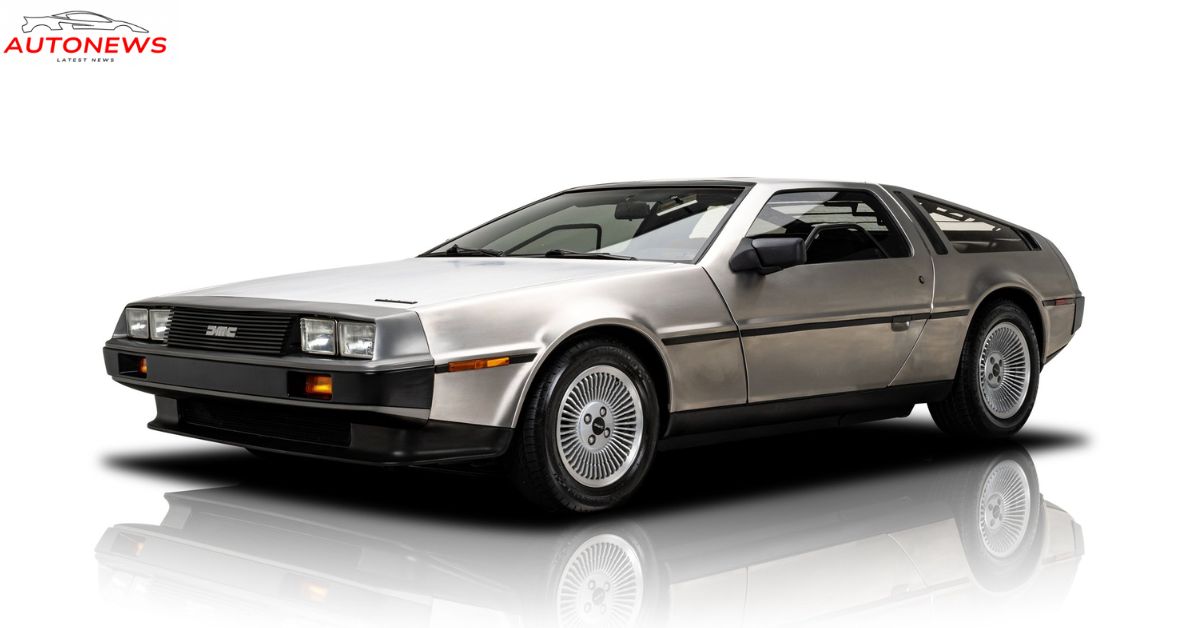Few cars have managed to capture the public’s imagination quite like the DeLorean DMC-12. With its brushed stainless-steel body, gull-wing doors, and iconic place in pop culture, the 1981 DeLorean is more than just a car—it’s a symbol of ambition, innovation, and a dream that flew too close to the sun. Though its production lifespan was brief, the DMC-12 continues to inspire automotive enthusiasts and film fans alike. This is the story of one of the most fascinating vehicles in automotive history.
A Bold Vision
The DeLorean DMC-12 was the brainchild of John Z. DeLorean, a former General Motors executive known for his unconventional thinking and fast rise through the ranks. After leaving GM in 1973, DeLorean sought to build a car that would revolutionize the industry. He envisioned a sleek, futuristic sports car that would stand apart from the gas-guzzling muscle cars of the era—something modern, efficient, and distinctly different.
In 1975, he founded the DeLorean Motor Company (DMC). With backing from investors, celebrity endorsements (notably from Johnny Carson and Sammy Davis Jr.), and substantial financial incentives from the British government, DeLorean established a manufacturing plant in Dunmurry, Northern Ireland. The first production DMC-12 rolled off the line in 1981.
A Car Like No Other
The DeLorean DMC-12 was unlike anything else on the road at the time. Designed by famed Italian stylist Giorgetto Giugiaro, its angular, wedge-like shape stood out in a sea of curvier, more traditional vehicles. The car’s stainless-steel body panels gave it a raw, industrial appearance that screamed futuristic minimalism. But perhaps the most striking feature was its gull-wing doors, which swung upward rather than outward, turning heads wherever they opened.
Under the hood, the DMC-12 was powered by a 2.85-liter V6 engine developed jointly by Peugeot, Renault, and Volvo (commonly referred to as the PRV engine). It produced about 130 horsepower—not exactly blistering by sports car standards, especially given the car’s weight. Performance-wise, the DeLorean was respectable but not remarkable, with a 0-60 mph time of around 10 seconds. Critics at the time noted the car’s underwhelming acceleration, but the DMC-12 was never truly about raw speed—it was about design and attitude.
The car featured a rear-engine layout and came with either a 5-speed manual or 3-speed automatic transmission. Inside, it offered a surprisingly comfortable and well-appointed interior for a startup automaker, with leather seats, air conditioning, and a full instrument panel.
Trouble in Paradise
Despite the hype, the DMC-12 faced challenges almost from the start. Quality control issues plagued early models due to inexperienced labor and rushed production. Fit and finish were inconsistent, and reliability problems began to surface soon after the cars hit showrooms.
Sales never met expectations. With a sticker price of around $25,000 (equivalent to over $80,000 today), the DMC-12 was expensive, especially for a brand-new company with no track record. Combined with the early 1980s recession and stiff competition from established sports car brands, the DeLorean struggled to find its market.
In 1982, DMC filed for bankruptcy, and John DeLorean was arrested in a highly publicized drug trafficking sting operation. Although he was later acquitted, the damage was done. Production ceased after only about 9,000 units had been built.
A Second Life in the Spotlight
The DeLorean DMC-12 might have faded into obscurity if not for Hollywood. In 1985, the car was immortalized in the film Back to the Future, where it was modified into a time machine by the eccentric Doc Brown. The movie gave the DMC-12 a legendary status, introducing it to a new generation and cementing its place in pop culture history.
Suddenly, The DeLorean was cool again. Fans began restoring and collecting the surviving models. Entire communities of enthusiasts formed, and parts suppliers emerged to support the car’s long-term survival. In fact, A Texas-based company called DeLorean Motor Company still services, restores, and even builds new DeLoreans using original parts.
Legacy of a Dreamer
Today, the 1981 DeLorean DMC-12 is much more than a failed experiment. It’s a collector’s item, a movie icon, and a testament to one man’s relentless pursuit of a dream. While its commercial journey was short-lived, the DMC-12 left an indelible mark on the automotive world.
For all its flaws, the DeLorean dared to be different. It didn’t just follow trends—it tried to set them. And in doing so, it earned a place not just in garages and museums, but in hearts and imaginations.

